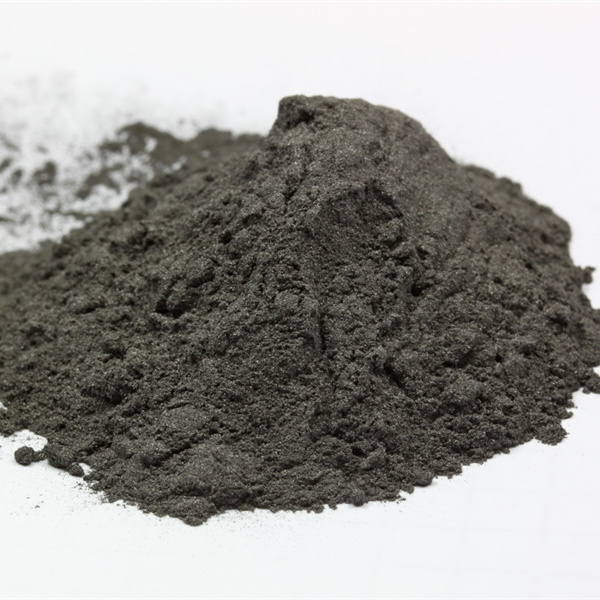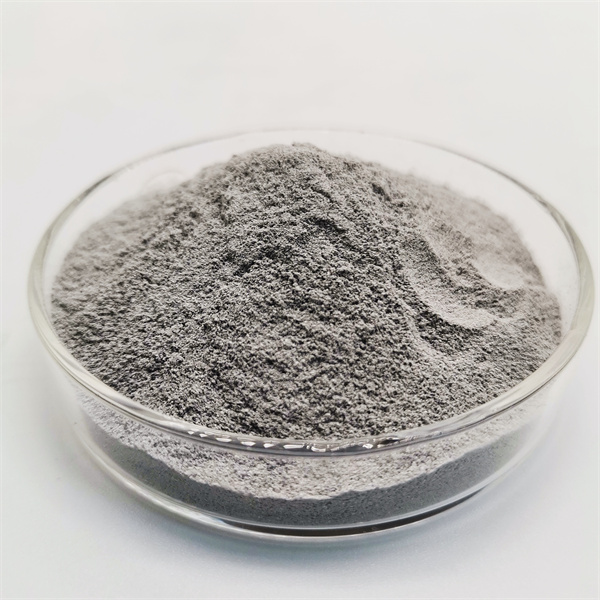Atomisasi gas adalah proses utama yang digunakan untuk menghasilkan serbuk logam halus dengan kontrol ukuran partikel yang tepat. Panduan ini memberikan gambaran umum yang komprehensif tentang peralatan atomisasi gas, termasuk prinsip kerja, jenis, aplikasi, pertimbangan desain, pemasok, pemasangan, dan pengoperasian.
Bagaimana Cara Kerja Atomisasi Gas?
Atomisasi gas menggunakan semburan gas berkecepatan tinggi untuk menghancurkan logam cair menjadi tetesan halus yang mengeras menjadi partikel bubuk. Tabel ini merangkum prinsip-prinsip utama:
| Prinsip Kerja | Deskripsi |
|---|---|
| Aliran Logam Cair | Logam cair dituangkan melalui nosel ke dalam ruang atomisasi |
| Jet Gas Bertekanan Tinggi | Semburan gas yang kuat (N2, Ar) dikeluarkan dari alat penyemprot |
| Pemutusan Aliran Logam | Semburan gas dengan cepat menghancurkan logam menjadi semprotan tetesan halus |
| Pemadatan Cepat | Tetesan dengan cepat mengeras menjadi partikel bubuk karena pendinginan yang cepat |
| Koleksi Bedak | Partikel serbuk dikumpulkan dalam bejana di bawah ruang |
Keuntungan utama dari atomisasi gas adalah kemampuan untuk mengontrol distribusi ukuran partikel dengan menyesuaikan parameter proses. Hal ini membuatnya cocok untuk memproduksi serbuk untuk aplikasi tingkat lanjut.
Jenis Alat Penyemprot Gas
Ada dua jenis utama sistem atomisasi gas:
Alat Penyemprot Berpasangan Tertutup
- Atomisasi terjadi dalam ruang tertutup yang terpasang langsung ke nosel tuang logam
- Memungkinkan penggunaan atmosfer lembam/terkendali
- Fleksibilitas terbatas dalam desain
Alat Penyemprot Jatuh Bebas
- Aliran logam cair jatuh bebas melalui ruang atomisasi
- Memberikan lebih banyak fleksibilitas dalam desain
- Terbuka terhadap atmosfer
Tabel ini membandingkan kedua tipe tersebut:
| Parameter | Pasangan Tertutup | Free Fall |
|---|---|---|
| Kontrol Suasana | Luar biasa | Terbatas |
| Fleksibilitas Desain | Dibatasi | Tinggi |
| Konsumsi Gas | Lebih rendah | Lebih tinggi |
| Kualitas bubuk | Unggul | Sedang |
| Pemeliharaan | Menantang | Relatif Mudah |
Komponen Utama
Komponen utama alat penyemprot gas meliputi:
- Unit peleburan dan penuangan
- Ruang atomisasi
- Pasokan gas bertekanan tinggi
- Sistem pengumpulan bubuk
- Sistem kontrol suhu
- Konsol kontrol

Aplikasi Atomisasi Gas
Serbuk yang dikabutkan dengan gas dapat digunakan dalam banyak aplikasi penting:
| Industri | Aplikasi |
|---|---|
| Dirgantara | Serbuk superalloy untuk mesin dan badan pesawat |
| Otomotif | Komponen metalurgi serbuk |
| Medis | Bahan implan seperti paduan titanium dan kobalt |
| Elektronik | Serbuk solder dan mematri |
| Manufaktur Aditif | Bubuk bahan baku untuk pencetakan 3D |
| Logam Keras | Serbuk karbida yang disemen |
| Magnet | Paduan magnet tanah jarang |
Kemampuan untuk mengontrol ukuran dan morfologi partikel secara tepat membuat serbuk yang dikabutkan dengan gas menjadi ideal untuk produksi material tingkat lanjut.
Pertimbangan Desain Alat Penyemprot Gas
Desain yang tepat sangat penting untuk mencapai karakteristik bubuk yang diinginkan. Faktor-faktor utama meliputi:
Gas Atomisasi
- Jenis gas - inert (Ar, N2) atau reaktif (O2, N2+H2)
- Tekanan dan laju aliran gas
Desain Nozzle
- Diameter nosel, bentuk, jumlah nosel
- Konfigurasi nosel - celah melingkar atau nosel terpisah
Ruang Atomisasi
- Bentuk dan ukuran ruang
- Jatuh bebas atau desain berpasangan tertutup
Sistem Pengumpulan
- Desain corong koleksi
- Pemisahan serbuk halus dan kasar
- Meminimalkan oksidasi
Tingkat Pendinginan
- Suhu dan tekanan gas
- Jarak antara nosel dan corong pengumpul
Otomatisasi
- Sistem kontrol untuk pengoperasian yang aman dan berulang
- Pemantauan dan perekaman data
Desain yang tepat sangat penting untuk mencapai karakteristik yang diinginkan seperti ukuran, bentuk, dan struktur mikro partikel.
Pemasok Sistem Atomisasi Gas
Ada banyak produsen peralatan yang merancang dan membangun sistem atomisasi gas. Berikut adalah beberapa pemasok utama:
| Pemasok | Lokasi |
|---|---|
| Pemrosesan Material Tingkat Lanjut (AMP) | AS |
| PSI | AS |
| Bubuk Logam 3D | AS |
| Sistem Phenix | Prancis |
| Bidikan Unggul | Kanada |
| Manufaktur Siklon | Kanada |
| ISL Vacuum技术 | Cina |
Pembeli perlu mengevaluasi pemasok berdasarkan:
- Pengalaman dan reputasi industri
- Rekam jejak instalasi yang berhasil
- Fleksibilitas dalam desain dan penyesuaian
- Layanan dan dukungan purna jual
Harga bervariasi dari sekitar $500.000 hingga lebih dari $2 juta berdasarkan kapasitas, fitur, dan penyesuaian.
Instalasi dan Pengoperasian
Prosedur pemasangan dan pengoperasian yang tepat sangat penting untuk alat penyemprot gas. Berikut adalah pertimbangan utama:
- Pondasi harus dirancang untuk menangani getaran selama pengoperasian
- Semua utilitas seperti listrik, gas inert, air pendingin harus disambungkan dengan benar
- Sistem kontrol harus dikalibrasi sebelum digunakan
- Komisioning awal harus dilakukan dengan logam bersuhu rendah
- Pelatihan operator sangat penting untuk keselamatan dan prosedur yang tepat
- Pemeliharaan preventif sesuai pedoman pemasok harus dijadwalkan
Pemantauan dan analisis distribusi ukuran partikel dan morfologi secara terus menerus diperlukan untuk memastikan karakteristik serbuk yang diinginkan tercapai.
Pemeliharaan dan Pemecahan Masalah
Perawatan rutin sangat penting untuk keandalan alat penyemprot gas:
| Tugas | Frekuensi |
|---|---|
| Periksa nosel dan Chamber | Setiap hari |
| Periksa saluran pendingin | Mingguan |
| Sistem pengumpulan yang bersih | Bulanan |
| Periksa saluran gas untuk mengetahui adanya kebocoran | Bulanan |
| Periksa instrumentasi kontrol | Bulanan |
| Perbaikan unit peleburan | Tahunan |
Masalah yang dihadapi dan kiat pemecahan masalah:
| Masalah | Kemungkinan Penyebab | Solusi |
|---|---|---|
| Ukuran bedak yang tidak beraturan | Nosel terhalang/rusak | Bersihkan atau ganti nosel |
| Hasil bubuk yang buruk | Tekanan gas rendah | Periksa fungsi kompresor |
| Bubuk teroksidasi | Kebocoran di dalam ruangan | Tutup kebocoran dan bersihkan dengan gas inert |
| Pemisahan bubuk | Desain kolektor yang tidak tepat | Mengoptimalkan sudut corong pengumpulan |
| Penyumbatan nosel | Kotoran dalam logam | Gunakan logam dengan kemurnian tinggi, saring meleleh |
Jadwal pemeliharaan preventif yang ketat dan prosedur pemantauan sangat penting untuk meminimalkan waktu henti. Personel harus dilatih dengan baik dalam teknik pemecahan masalah.
Memilih Pemasok Alat Penyemprot Gas
Berikut adalah pertimbangan utama untuk memilih pemasok alat penyemprot gas:
Keahlian Teknis
- Pengalaman merancang alat penyemprot untuk logam atau paduan tertentu
- Kemampuan untuk mencapai ukuran dan morfologi partikel yang diinginkan
- Memahami persyaratan seperti operasi lembam, atmosfer pelindung
Kustomisasi
- Fleksibilitas untuk memodifikasi desain untuk kapasitas produksi, karakteristik bubuk
- Integrasi fitur tambahan seperti degasser, penambahan paduan
Kualitas
- Produksi bubuk yang konsisten memenuhi spesifikasi
- Peralatan yang andal dengan waktu henti minimum
- Reputasi untuk manufaktur berkualitas tinggi
Layanan
- Dukungan teknis untuk pemasangan, pengaktifan, dan pengoperasian
- Program pelatihan operator
- Ketersediaan suku cadang dan layanan lapangan
Harga
- Total biaya termasuk peralatan tambahan, kontrol, opsi
- Analisis biaya-manfaat dari fitur khusus
- Kontrak layanan purna jual dan pemeliharaan
Memprioritaskan persyaratan utama dan membandingkan pemasok penting untuk memilih alat penyemprot gas yang tepat.
Pro dan Kontra Atomisasi Gas
Keuntungan
- Kontrol ukuran dan morfologi partikel yang sangat baik
- Berlaku untuk berbagai macam paduan
- Operasi inert memungkinkan untuk meminimalkan oksidasi
- Produksi serbuk berkelanjutan dengan hasil yang baik
- Pengoperasian otomatis untuk keamanan dan konsistensi
Keterbatasan
- Biaya modal dan operasional yang tinggi
- Fleksibilitas terbatas dalam perubahan paduan
- Serbuk mungkin memerlukan pemrosesan sekunder
- Tidak cocok untuk beberapa paduan reaktif
- Membutuhkan tenaga terampil untuk pengoperasian
Atomisasi gas adalah metode produksi serbuk yang lebih disukai ketika kontrol yang tepat atas karakteristik serbuk sangat penting.
Atomisasi Gas vs Metode Alternatif
Perbandingan dengan Atomisasi Air
- Distribusi ukuran partikel yang lebih ketat dengan atomisasi gas
- Pengambilan oksigen yang lebih rendah dibandingkan dengan atomisasi air
- Biaya investasi yang lebih tinggi daripada atomisasi air
- Kisaran paduan terbatas versus atomisasi air
Perbandingan dengan Atomisasi Plasma
- Ukuran serbuk yang lebih halus dapat dicapai melalui atomisasi plasma
- Lebih mahal daripada sistem atomisasi gas
- Kapasitas produksi terbatas dengan atomisasi plasma
- Kemampuan atmosfer lembam yang serupa
Perbandingan dengan Peleburan Induksi Elektroda
- Produktivitas yang lebih rendah daripada atomisasi gas
- Kemampuan terbatas untuk mengontrol ukuran dan bentuk partikel
- Proses yang sederhana dan berbiaya rendah dibandingkan dengan atomisasi gas
- Hanya cocok untuk logam yang mudah meleleh
Atomisasi gas memberikan keseimbangan terbaik antara kontrol ukuran partikel dan produktivitas yang masuk akal untuk banyak aplikasi metalurgi serbuk yang kritis.
Prospek Masa Depan untuk Teknologi Atomisasi Gas
Prospek masa depan untuk atomisasi gas terlihat positif karena beberapa tren:
- Meningkatnya penggunaan manufaktur aditif mendorong permintaan akan serbuk halus
- Kebutuhan akan karakteristik bubuk yang disesuaikan untuk material canggih
- Pengembangan desain nosel atomisasi gas baru
- Ekspansi ke berbagai paduan yang lebih luas termasuk oksida logam
- Integrasi otomatisasi dan IoT untuk pemantauan proses yang lebih baik
- Penggunaan atomisasi gas untuk partikel berstruktur mikro
- Adopsi atomisasi gas di negara-negara berkembang
Peralatan atomisasi gas akan terus berkembang untuk memenuhi kebutuhan bubuk dari teknologi baru dan material canggih.

PERTANYAAN YANG SERING DIAJUKAN
T: Berapa ukuran partikel terkecil yang dapat dicapai dengan atomisasi gas?
J: Alat penyemprot gas dapat menghasilkan serbuk hingga sekitar 5 mikron dengan mengoptimalkan parameter seperti tekanan gas, desain nosel, dan jarak pengumpulan. Namun demikian, laju produksi menurun secara signifikan pada ukuran yang sangat halus.
T: Berapa banyak pemantauan dan kontrol yang diperlukan saat mengoperasikan alat penyemprot gas?
J: Pemantauan suhu, tekanan gas, dan distribusi ukuran bubuk secara terus menerus diperlukan. Kontrol Logika Terprogram Otomatis biasanya digunakan untuk memantau dan mengatur semua parameter proses.
T: Perawatan apa yang perlu dilakukan pada peralatan atomisasi gas?
J: Nozel, saluran gas, dan filter perlu diperiksa dan diganti secara teratur jika terhalang. Saluran pendingin air perlu diperiksa. Unit peleburan membutuhkan perbaikan tahunan. Perawatan yang tepat meminimalkan waktu henti.
T: Seberapa cepat alat penyemprot gas dapat dialihkan di antara paduan yang berbeda?
J: Pergantian paduan memerlukan waktu 1-2 hari, tergantung pada urutan material. Nozel dan saluran harus dibersihkan untuk menghindari kontaminasi silang di antara serbuk paduan.
T: Langkah-langkah keamanan apa yang diperlukan untuk atomisasi gas?
J: Peralatan pelindung personel yang tepat, monitor gas, pemadaman darurat, dan pelatihan tentang prosedur keselamatan adalah wajib. Pengoperasian gas inert juga meningkatkan keselamatan.
T: Berapa kapasitas produksi khas alat penyemprot gas industri?
J: Kapasitas produksi berkisar antara 50 kg/jam untuk unit skala lab benchtop hingga lebih dari 1000 kg/jam untuk alat penyemprot gas industri berkapasitas tinggi, tergantung pada desain dan ukuran nosel.
T: Keahlian apa yang diperlukan untuk mengoperasikan peralatan atomisasi gas dengan benar?
J: Personel membutuhkan pelatihan di bidang-bidang seperti penuangan lelehan, pemrosesan serbuk, instrumentasi, sistem mekanis, dan pemecahan masalah. Pengetahuan metalurgi juga sangat menguntungkan.
